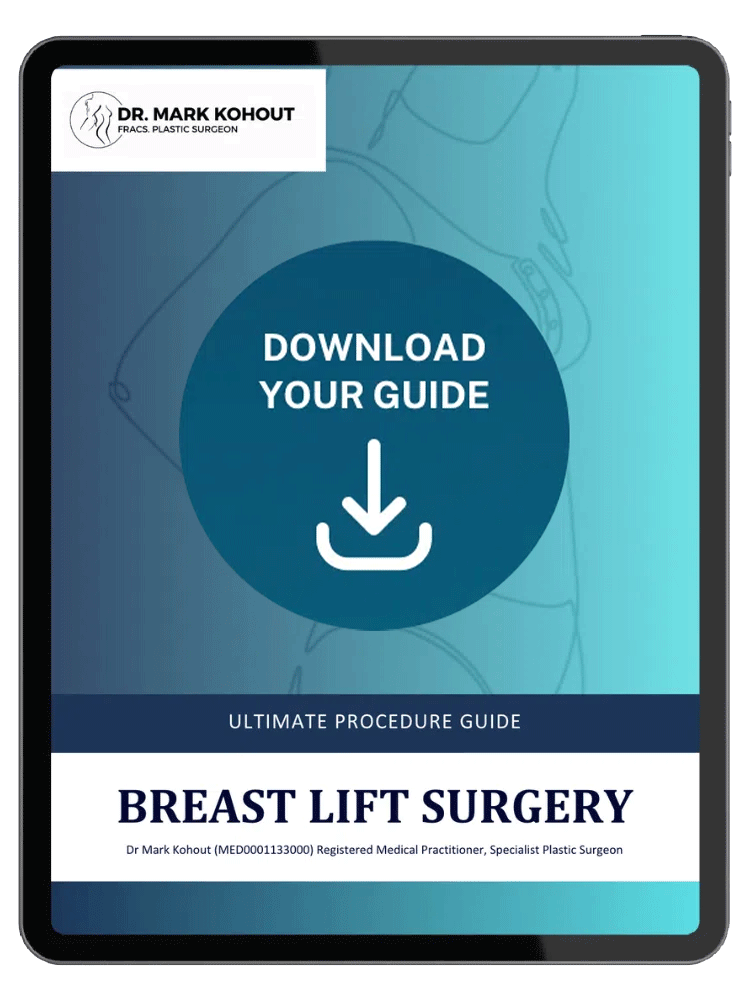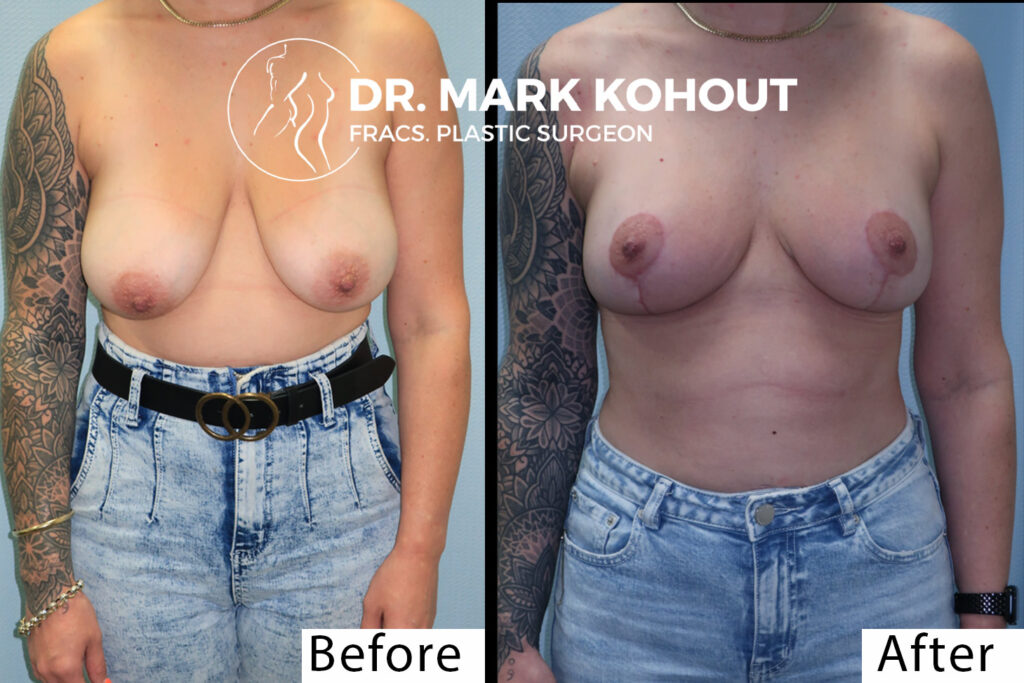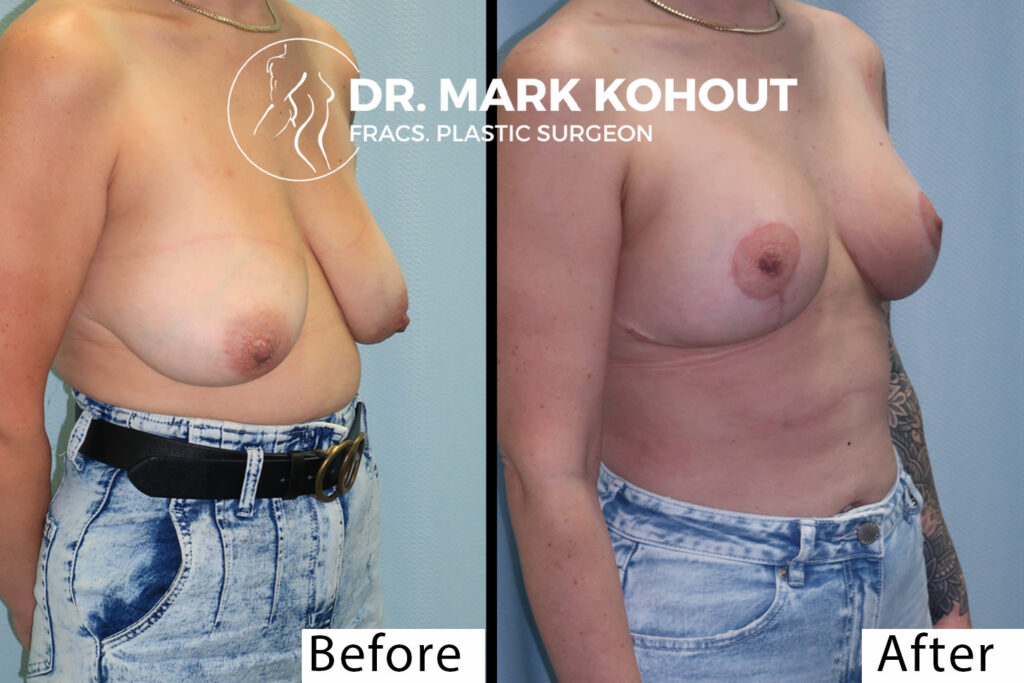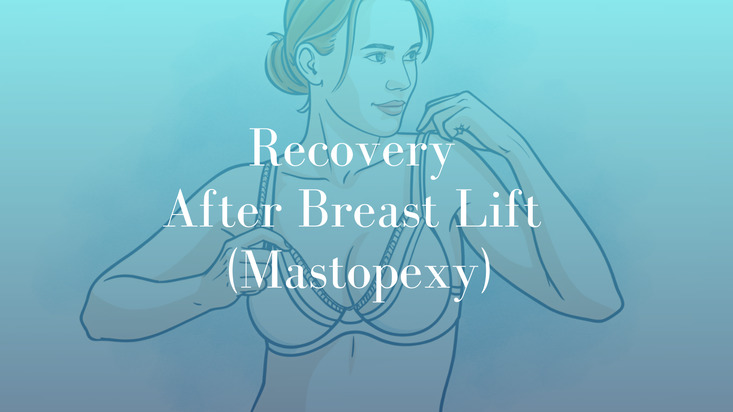
When planning for plastic surgery, it is important to consider not only the operation itself but also the recovery period that follows. A breast lift, or mastopexy, is a procedure designed to reposition and reshape the breasts. It is often sought by women who want to address changes that occur naturally over time or as a result of life events such as pregnancy, breastfeeding, or significant weight fluctuations. The way the body heals after surgery is just as important as the surgery itself, and having a clear understanding what to expect during this period can help patients feel more informed and prepared.
In Sydney, Dr Mark Kohout, Specialist Plastic Surgeon, regularly performs breast lift procedures and places strong emphasis on guiding patients through the recovery process. The period after surgery is when healing occurs, scars begin to settle, and results gradually take shape. However, no two patients heal in exactly the same way. Individual timelines vary, and recovery can be influenced by many factors including age, general health, skin quality, and adherence to aftercare instructions. By taking the time to understand what recovery involves, patients are better prepared to plan ahead, make informed decisions, and adjust their lifestyle temporarily to support safe and effective healing.
Understanding Breast Lift Surgery
A breast lift, also known by its medical term mastopexy, is a surgical procedure that involves lifting and reshaping the breast tissue. The surgery is designed to remove excess skin and reposition the breast and nipple-areola complex to a more elevated position. It does not change the overall breast size unless combined with another procedure such as augmentation with implants or breast reduction where tissue is removed.
Women often consider this procedure when they notice changes such as breast drooping, skin laxity, or nipples that point downwards. These are common developments that occur with ageing, after pregnancies, or when weight gain and loss affect the skin and tissue. Mastopexy is not intended to create an entirely new breast shape but rather to reposition existing tissue into a firmer, lifted contour.
In Sydney, Dr Mark Kohout, Plastic Surgeon, offers mastopexy tailored to individual anatomy and goals. Different incision techniques may be used depending on how much lifting is required. Some procedures involve an incision around the areola, others extend vertically down the breast, and some include a horizontal incision within the crease under the breast. Each method has its own indications and potential scar patterns, and these details are discussed thoroughly in consultation.
As with all surgery, scars are an inevitable part of mastopexy. While most scars fade and flatten over time, their visibility will always remain to some degree. Surgeons provide guidance on strategies such as scar care and sun protection to help scars mature more favourably. Understanding this aspect before surgery is an important part of setting realistic expectations.
Recovery Overview: What Patients Can Expect
The recovery journey after a breast lift is gradual and typically occurs in phases. Immediately after the procedure, patients are monitored in a recovery area to ensure stability before being discharged. Some patients go home the same day, while others may remain overnight if recommended by their surgeon.
A support garment or surgical bra is usually fitted to provide comfort and reduce swelling. In the days that follow, it is common to experience swelling, bruising, and a feeling of tightness in the chest. These effects are normal responses to surgery and improve with time. Many patients also feel more tired than usual, as the body diverts energy towards healing.
Recovery is not a quick process, and returning to normal routines requires patience. It is important to follow the surgeon’s advice carefully, including restrictions on activity, wound care instructions, and attendance at follow-up appointments. Doing so allows healing to progress smoothly and reduces the risk of complications.
First 24–48 Hours After Surgery
The first one to two days following mastopexy are a crucial stage. Patients may still feel drowsy from anaesthesia and should have a responsible adult available to drive them home and provide assistance. Rest is the priority during this period, although patients are usually advised to get up and walk gently around the house to promote circulation.
Discomfort is usually managed with prescribed medication, and antibiotics may be given to reduce infection risk. It is also common to experience a feeling of heaviness or tightness in the breasts as tissues begin to settle. Cold compresses may sometimes be recommended for comfort, but only if approved by the surgeon.
During this time, patients are encouraged to drink fluids, eat light meals, and avoid any unnecessary movement. Wound dressings should remain intact unless otherwise instructed, and showers are usually delayed until the surgeon confirms it is safe. This early recovery period is about protecting the surgical site and allowing the body to begin the healing process without strain.
The First Two Weeks
The first two weeks after a breast lift are generally considered the most restrictive stage of recovery. Patients often find that swelling and bruising peak in the first few days and then gradually begin to reduce. Discomfort lessens, but tenderness may remain when moving or adjusting positions.
Most surgeons recommend wearing a supportive surgical bra day and night during this period. This garment helps reduce swelling and supports the breasts while they heal. Patients are usually advised to avoid lifting anything heavy, reaching above shoulder height, or engaging in activities that put pressure on the chest or arms. These restrictions help protect the healing incisions and reduce strain on breast tissue.
Office-based work is often possible within ten to fourteen days, depending on individual healing speed and the physical demands of the job. More physically demanding roles may require additional time off. Wound checks are performed during follow-up visits, and if sutures need to be removed, this is typically done within the first two weeks.
Weeks 3–6: Returning To Normal Routines
As the third week approaches, many patients notice improvements in comfort, energy, and movement. Swelling continues to decrease, and incisions begin to settle into early scar formation. By this stage, patients can usually walk more freely and may gradually resume light activities such as household tasks or short outings.
Driving is often resumed once patients can comfortably wear a seatbelt, move their arms without pain, and no longer rely on strong pain medication. Physical exercise should remain limited to walking or very light activity, avoiding any form of strenuous or high-impact exercise until cleared by the surgeon.
By the end of the sixth week, many patients are able to return to most of their normal daily routines. However, surgeons usually caution against resuming weight training or vigorous activities involving the chest until a full review confirms it is safe. Ongoing use of the support bra may still be recommended to provide continued support during this stage of healing.
Long-Term Recovery (3 Months And Beyond)
Although patients typically feel much more comfortable by six weeks, long-term recovery continues well beyond this point. Between three and six months, breast tissues gradually adapt to their new position, and the final shape of the breasts becomes more apparent.
Scar maturation is a particularly important part of long-term recovery. Initially, scars may appear red or raised, but over twelve to eighteen months they usually flatten and fade to a lighter colour. The degree of visibility varies depending on factors such as skin type, genetics, and adherence to scar care protocols.
Ongoing follow-up appointments with Dr Mark Kohout in Sydney are an essential part of this stage. These visits provide reassurance, allow monitoring of scar progression, and create an opportunity to address any concerns. The long-term recovery phase is also when patients begin to see the more settled outcome of their surgery, although it is important to remember that breasts will continue to change naturally over time with age and lifestyle factors.
Scar Care And Healing
Scars are an unavoidable part of any breast lift procedure, but there are ways to support their healing and improve their appearance over time. Once the incisions have healed, many surgeons recommend the use of silicone gels or silicone sheets. These products can help soften scars, reduce redness, and encourage a flatter appearance.
Sun protection is particularly important. Scar tissue can darken with sun exposure, making scars more noticeable. Using clothing to cover the area or applying sunscreen once healing allows can reduce this risk. Some patients may also be guided in gentle scar massage techniques to improve flexibility and comfort.
Every patient heals differently, and while some develop fine, faint scars, others may notice thicker or more prominent marks. Factors such as skin tone, genetics, and adherence to aftercare instructions all play a role. Dr Mark Kohout, Plastic Surgeon in Sydney, discusses scar care options during follow-up consultations to support each patient’s long-term results.
Breast Lift Surgery Before and After Images
Supporting Recovery Through Lifestyle Choices
Lifestyle decisions can significantly influence the recovery process after a breast lift. One of the most important factors is smoking cessation, as smoking reduces blood supply to healing tissues and increases the risk of infection, delayed healing, and poor scar quality. Patients are strongly encouraged to avoid smoking before and after surgery.
Nutrition also plays a key role in supporting tissue repair. A balanced diet with adequate protein, vitamins, and hydration provides the building blocks needed for healing. Good rest is equally important, as the body requires energy to repair itself. Sleeping on the back with pillows for support is often more comfortable and helps avoid pressure on the healing breasts.
Gentle activity, such as short walks, promotes circulation and reduces the risk of stiffness or blood clots. However, overexertion too early can cause setbacks. Patients are encouraged to listen to their body and gradually increase activity levels in line with medical advice.
Monitoring For Complications
As with any surgical procedure, breast lift surgery carries potential risks. Patients are advised to be vigilant during recovery and to seek medical review if unexpected changes occur. Warning signs can include persistent or worsening pain that does not respond to prescribed medication, excessive swelling or bleeding, unusual redness or discharge at incision sites, or fever that could indicate infection.
Occasionally, patients may notice changes in breast sensation, which can be temporary or, in some cases, longer-lasting. Regular follow-up visits are scheduled to assess healing and to detect any issues early. Patients are always encouraged to contact their surgeon promptly if they have concerns between scheduled appointments.
Psychological And Practical Considerations
Recovery after a breast lift involves more than physical healing. Many patients find the process requires patience and mental adjustment. In the early weeks, swelling and changes in breast shape may create uncertainty, and scars can initially appear more noticeable before they begin to fade. It is natural to feel a mixture of emotions during this time, ranging from excitement about progress to impatience with the pace of healing.
Being prepared for these emotional shifts can make the recovery process easier. Setting realistic expectations before surgery and maintaining open communication with the surgeon afterwards are key to navigating this stage. Practical planning also helps, such as arranging help with childcare or household tasks and preparing a comfortable recovery space at home with items within easy reach.
Over time, as healing progresses and the breasts settle, many patients feel more comfortable with the changes. Having realistic expectations and patience throughout recovery allows for a more positive overall experience.
Key Takeaways For Patients Considering A Breast Lift In Sydney
Recovery from a breast lift (mastopexy) is a gradual process that occurs over weeks and months. In the immediate period after surgery, rest and careful wound care are essential. During the first two weeks, activity restrictions remain in place, and support garments are worn consistently. By three to six weeks, most patients are able to resume many of their usual daily activities, although strenuous exercise and heavy lifting are delayed until clearance is given.
Beyond six weeks, healing continues as scars mature and breast tissues settle into their new position. Final results may take several months to become fully apparent, and scar appearance continues to improve over a year or more. Regular follow-up appointments with Dr Mark Kohout, Specialist Plastic Surgeon in Sydney, ensure that progress is monitored and support is provided throughout the recovery journey.
FAQs About Recovery After Breast Lift (Mastopexy)
How Will I Know If My Recovery Is Progressing As Expected?
Every patient’s recovery moves at a different pace. Regular follow-up appointments are scheduled so your surgeon can assess healing and provide reassurance. If you notice unexpected changes, such as increased swelling or pain, you should contact your surgical team promptly.
Is It Normal For Breasts To Feel Different After Surgery?
Yes, changes in sensation, firmness, or position are common after mastopexy. These often improve with time, though in some cases they may persist. Surgeons discuss these possibilities during consultation to ensure you are aware of the range of potential outcomes.
What Role Does The Support Garment Play In Recovery?
A support bra or garment helps reduce swelling and supports breast tissue as it heals. It is usually recommended for several weeks after surgery. Your surgeon will guide you on how long to wear it and when it may be reduced to daytime only.
Why Do Scars Look More Noticeable At First?
Scars often appear red, raised, or firm in the early months of recovery. Over time, they usually soften and fade, although their final appearance varies from person to person. Protecting scars from sun exposure and following care advice can help them mature more favourably.
Can My Sleeping Position Affect Recovery?
Yes, during the initial weeks it is often more comfortable to sleep on your back to avoid pressure on the breasts. As healing progresses and tenderness improves, patients can gradually return to their preferred sleeping positions.
What Happens If I Accidentally Overdo Activity Too Soon?
Overexertion before the body is ready may increase swelling, discomfort, or place stress on healing incisions. If this happens, rest and monitoring are important. It is best to check in with your surgical team if you are concerned about any changes after physical activity.
Why Are Follow-Up Appointments So Important?
These visits allow your surgeon to track progress, address any concerns, and give personalised advice about returning to activity or adjusting scar care. They are an important safeguard during the recovery process.
Medical References
- Periareolar Mastopexy with Breast Implants and Fat Grafting https://link.springer.com/article/10.1007/s00266-025-05116-z
- Breast Lift (Mastopexy): Surgery & Recovery. Cleveland Clinic. https://my.clevelandclinic.org/health/treatments/23298-breast-lift
- Breast lift. Mayo Clinic. https://www.mayoclinic.org/tests-procedures/breast-lift/about/pac-20393218
- Mastopexy (Breast Lift). StatPearls – NCBI Bookshelf (Note: Currently under maintenance but a reputable source)
https://www.ncbi.nlm.nih.gov/sites/books/NBK610682/
Call To Action
involves, a consultation with Dr Mark Kohout, Plastic Surgeon in Sydney, provides the opportunity to discuss your medical history, goals, and expectations in detail. During this appointment, you will receive personalised guidance on the procedure, the recovery process, and the long-term considerations that are unique to your situation. Taking this step allows you to make informed decisions about your care and to approach surgery with clarity and confidence.
Further Reading about Breast Lift Surgery with Sydney Specialist Plastic Surgeon Dr Mark Kohout
- Read more about Dr. Mark Kohout’s Cost of Breast Lift Surgery in Sydney Blog
- Read more about Dr. Mark Kohout’s Medicare for Breast Lift – Mastopexy Blog
Related Blog Posts
Medicare for Breast Lift – Mastopexy
A breast lift, also known as mastopexy, is a surgical procedure designed to reshape and lift the breasts, also addressing the contour. While many associate this procedure with cosmetic alterations,…
Recovery after Breast Lift Surgery (Mastopexy)
The breast lift, or mastopexy, is a surgical procedure designed to elevate and reshape hanging breasts, restoring a more youthful and tighter appearance. As women age or experience significant weight fluctuations,…
Cost of Breast Lift Surgery in…
An In-Depth Look at the Cost of a Breast Lift in Sydney A breast lift, medically referred to as Mastopexy, is a surgical procedure designed to raise and reshape the breasts. Many individuals…
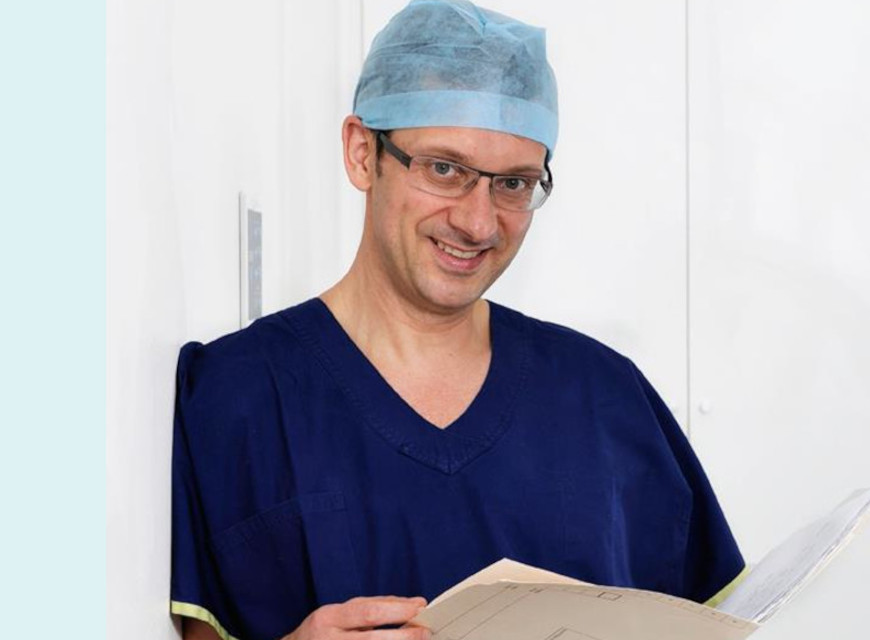
Experienced Plastic Surgeon
Dr. Mark Kohout
A qualified plastic surgeon who operates with care and integrity, based in central Sydney with over 20 years of experience in the cosmetic field. His extensive training and experience assures patients they are in highly trained surgical hands. Dr. Kohout is a dedicated, friendly professional who is committed to providing the high quality care, support and results, alongside his compassionate team.
Dr Mark Kohout (MED0001133000)
Specialist Plastic Surgeon
Specialist registration in Surgery – Plastic Surgery


